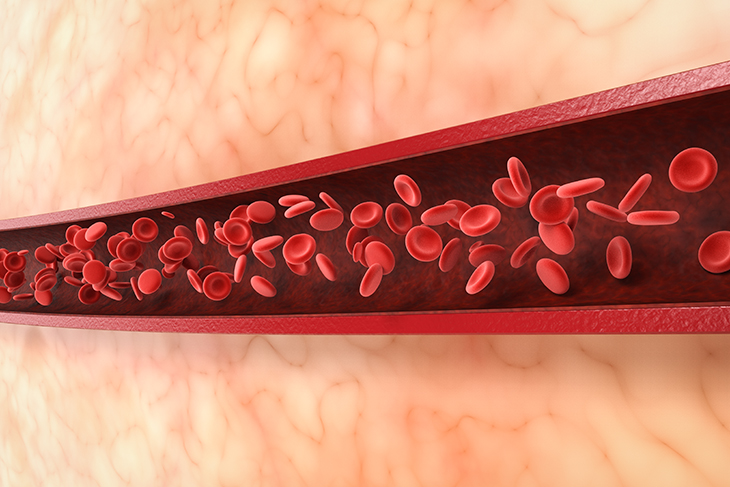Blood circulation is a vital process for our body, as it allows the transport of oxygen and nutrients to the cells and the elimination of waste. During the summer, many people may notice some problems related to circulation due to the high temperatures. But why is it affected in summer and what are the symptoms of poor circulation? What can we do to improve it?
WHAT IS BLOOD CIRCULATION?
Circulation is the continuous flow of blood through the cardiovascular system, which includes the heart, arteries, veins, and capillaries. This circulation is crucial to maintaining homeostasis and optimal functioning of all organs and systems in the body. The heart acts as a pump, propelling oxygen-rich blood from the lungs to the rest of the body through the arteries, and then returning deoxygenated blood to the lungs to be reoxygenated.
WHY IS BLOOD CIRCULATION AFFECTED IN SUMMER?
During the summer, high temperatures can negatively affect blood circulation. The heat causes blood vessels to dilate, which can lead to blood pooling in the extremities and decreased venous return to the heart. This condition can cause swelling in the legs and feet, and in some cases, aggravate pre-existing circulatory problems such as varicose veins.
EFFECTS OF HEAT ON CIRCULATION
When the ambient temperature rises, the body tries to maintain a stable internal temperature by sweating and dilating the blood vessels in the skin. This helps dissipate heat, but can also make the heart work harder to pump blood through the dilated vessels. As a result, some people may experience a drop in blood pressure, which can cause dizziness, fatigue, and, in extreme cases, fainting.
SYMPTOMS OF BLOOD CIRCULATION PROBLEMS IN SUMMER
Circulation problems can manifest themselves in a variety of ways. Some of the most common symptoms include:
- Swelling : especially in the legs, ankles and feet.
- Heaviness and fatigue: feeling tired for no apparent reason.
- Cramps and pain: especially in the legs.
- Varices : the veins become more visible and swollen.
- Dizziness and fainting: due to low blood pressure.
WHAT CAN WE DO TO IMPROVE BLOOD CIRCULATION IN SUMMER?
Hydration
Staying well hydrated is essential for good blood circulation. Water helps maintain adequate blood volume and facilitates the transport of nutrients and oxygen to cells. It is recommended to drink at least 8 glasses of water per day, and more if you are exposed to high temperatures or engage in intense physical activity.
Regular exercise
Exercise is one of the best ways to improve blood circulation. Activities like walking, swimming, cycling, and yoga can help strengthen the cardiovascular system and promote healthy blood flow. During the summer, it is advisable to exercise during the cooler hours of the day, such as early morning or sunset, to avoid extreme heat.
Healthy eating
A balanced diet rich in fruits, vegetables, whole grains, and lean proteins can improve cardiovascular health and blood circulation. Foods like citrus fruits, berries, spinach, nuts, and fish rich in omega-3s are particularly beneficial. Additionally, it’s important to limit salt and saturated fats, which can contribute to poor circulation.
Appropriate clothing
Wearing comfortable, lightweight clothing can help prevent blood flow restriction. Tight clothing, especially on the legs, can worsen swelling and circulatory problems. Opt for loose-fitting clothing made of breathable fabrics that allow for good ventilation and comfort.
Rest and leg elevation
Taking regular breaks and elevating your legs above heart level can help improve venous return and reduce swelling. This is especially helpful if you spend a lot of time standing or sitting. Try elevating your legs for 15-20 minutes several times a day.
Avoid extreme heat
Trying to stay cool and avoiding prolonged exposure to heat can prevent excessive dilation of blood vessels. Using fans, air conditioning, taking cold showers, and staying in cool places during the hottest hours are effective strategies to maintain good blood circulation.
Massages and complementary therapies
Massages can help stimulate blood circulation and relieve muscle tension. Consider getting regular massages, especially on your legs, to promote better blood flow. Other complementary therapies, such as acupuncture and hydrotherapy, may also be beneficial.
Compression products
The use of compression stockings may be helpful for those who suffer from severe circulatory problems. These products are designed to apply pressure to the legs, helping to improve venous return and reduce swelling. Consult a healthcare professional to determine if this type of product is right for you.
A HEALTHY AND ACTIVE SUMMER
Blood circulation is essential for our bodies to function optimally, and during the summer, it is important to take extra steps to keep it in good condition. Staying hydrated, exercising regularly, eating a healthy diet, and avoiding extreme heat are some of the strategies that can help improve blood circulation.
If you experience persistent problems, do not hesitate to consult a health professional.
